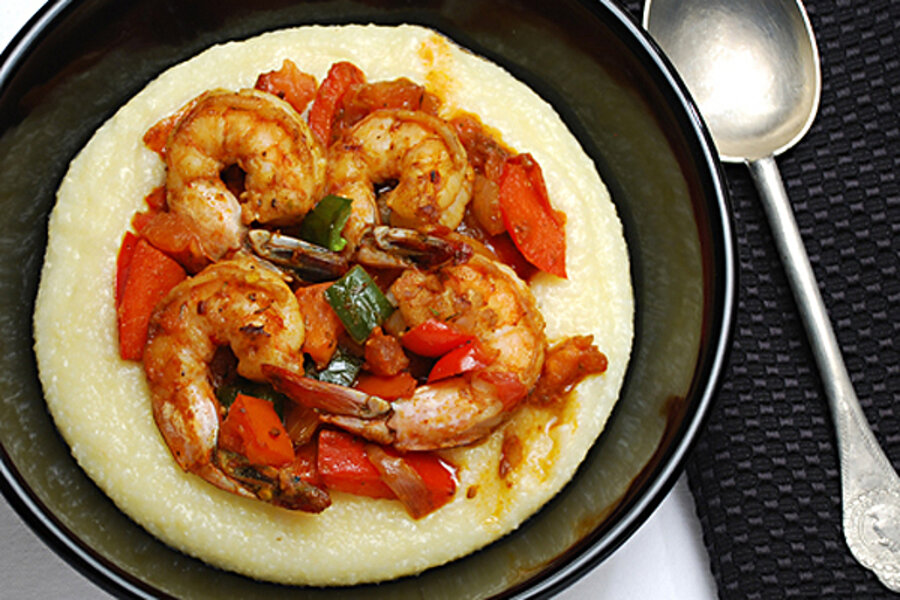Cookbook review: Taste of Treme
Loading...
New Orleans is one of our favorite cities for food. Everything tastes of history, blended cultures and spices. Lots of spices. Some of them hot, of course, but more often just big flavored. And from the diviest dives to the fanciest white tablecloth spots, you have to work hard to find a bad meal.
It’s been too long since we’ve been back to New Orleans. Fortunately, "Taste of Tremé: Creole, Cajun, and Soul Food from New Orleans’s Famous Neighborhood of Jazz" by Todd-Michael St. Pierre delivers. Published in October 2012, it is stuffed with doable recipes, from breakfast right on through to dinner, dessert, and cocktails.
"Taste of Tremé" is also packed with the flavor and soul of the city. Author Todd-Michael St. Pierre shares some history of Tremé, his favorite NOLA neighborhood and the oldest African-American community in the nation. St. Pierre says of the area “music is always in the air and something wonderful is always simmering on the stove.”
This recipe for shrimp with cheddar grits had me at "grits." I grew up in St. Louis, about as far north as grits reliably get on breakfast joint menus. And I have a lot of family in the South. So the creamy texture and buttery, salty taste of grits (to those of you who put sugar or syrup on grits, stop it) is a road trip welcome home sign for my mouth.
It helps to think of grits as kind of polenta (they’re both ground corn) or even risotto, filtered through Southern kitchens. All are slow cooked to a creamy finish that, unlike rice or pasta, doesn’t need a sauce or gravy. In fact, they often serve as the slightly saucy base for other foods.
St. Pierre warns that a “true grits connoisseur will scold you if you suggest that they use instant grits or what are commonly called ‘quick grits.’ ” On the day I had for shopping, quick grits were all I could find – Chicago may be too far north for the real thing. If you can find old-fashioned, slow-cooking grits, do so. Otherwise, the quick grits are pretty good. However, don’t use the instant grits – even I wouldn’t do that.
Spicy Shrimp with Tomatoes and Cheddar Grits
Serves 3
For the shrimp:
2 tablespoons canola or olive oil
1 small red bell pepper, chopped
1 small yellow onion, chopped
1 jalapeño pepper (or other pepper—see Kitchen Notes), finely chopped
1 large clove garlic, minced
3/4 pound uncooked shrimp, peeled and deveined
1 tablespoon Creole/Cajun spice (see Kitchen Notes)
2 to 3 plum tomatoes, coarsely chopped
For the grits:
3 cups water
a generous 1/4 teaspoon salt
3/4 cup grits
1/2 cup shredded cheddar cheese (I used extra sharp)
A quick note: Time the cooking of the grits and the shrimp so they’re both done at the same time, based on the kind of grits you use.
Cook the shrimp. Heat the oil in a large nonstick skillet over medium flame. Add bell pepper, onion, jalapeño pepper and garlic and cook, stirring frequently, for five minutes. Be careful not to brown or burn the garlic.
Add Creole/Cajun spice and shrimp, stirring to combine, and cook for two minutes, turning the shrimp halfway through. At this point, the skillet will seem alarmingly dry. Don’t worry. Add the tomatoes and cook for an additional three minutes, stirring frequently. The tomatoes will release their juices; use them to scrape up any browned bits and incorporate them into the dish.
Meanwhile, cook the grits. Bring the water to a rapid boil in a medium saucepan. Add the salt and then slowly stir in the grits. Return to a boil and then reduce heat to low so the grits just simmer. Cook, stirring occasionally, until grits are smooth and thickened—30 to 45 minutes for old-fashioned grits, five to seven minutes for quick grits.
Don’t go crazy on the thickening – like polenta, they will continue to thicken as they cool. Remove from heat and stir in the cheddar until it completely melts into the grits.
Assemble the dish. Spoon grits into individual shallow bowls. Top with vegetables and shrimp and serve.
Kitchen Notes
Pick a pepper. The original recipe calls for a tabasco pepper. I went with the more readily available jalapeño, which is also lower on the heat scale than the tabasco (but I didn’t seed my pepper, as the recipe called for with the tabasco). You could also use a Serrano pepper, if you want more heat.
Creole/Cajun spice. St. Pierre’s Suck da Heads and Pinch da Tails Creole Spice sounds like an excellent mix (and authentically, it uses onion powder and garlic powder, two regulars in New Orleans cookbooks, even when the recipe uses fresh onion and garlic, as does this one). I used this recipe for Emeril’s Creole Seasoning, a slightly stripped down version. (I switched teaspoons for tablespoons, reducing my total mixture to 1/3 the original recipe and still have plenty left for other uses.) In a pinch, you can use store-bought Creole/Cajun spice.








